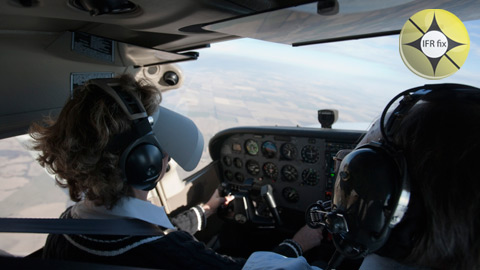
"This isn't going to work," you say aloud as you roll out on the assigned vector and prepare to shoot the approach.
Good thing this is just practice. Under instrument meteorological conditions this scenario could be nerve wracking. Maybe your workload would have prevented you from even seeing the problem developing.
Inbound on the usual heading of 060 degrees, you were advised to expect the ILS Runway 15 approach. Typically, the next vector is a right turn to 090 degrees. A turn to 120 degrees usually follows, accompanied by instructions to maintain an assigned altitude until established on the localizer, and approach clearance.
What caught your eye, this time, was your proximity to the final approach course, long before the customary 30-degree intercept could be flown. It’s obvious that you will blast through the course with no opportunity to get safely aligned.
What went wrong? You flew the assigned headings--even seeking the magnetic compass’s reassurance that the electronics on the panel were not deluded. Perhaps ATC failed to notice your unusually high groundspeed, caused by the nice tailwind that has been speeding you homeward. Maybe another aircraft squeezed the sequence, and this is the ripple effect.
Well, that’s why we practice.
So what happens now? ATC may have to bring you across the final approach course, eventually weaving you back into the sequence for another try—how’s your fuel supply holding up?
Or, you could slow down early, mindful that disruptions in your routine can start an event chain leading to a gear-up landing or some other distraction.
Don’t fall into hurry-up-and-get-down mode, with its temptations to become aggressive with your maneuvering or push minimums on the descent. (Throw in some turbulence, or a trace of ice, and suddenly a merely aggravating scenario has become dangerous.)
Good thing your proficiency gave you the ability to recognize what was happening. Now take charge, point out the problem, and request the best remedy given flight conditions that only you know first-hand.
Someday when it’s for real, you will remind yourself that even when flying your usual aircraft on a comfortably familiar instrument approach, well, you just never know. And that’s an insight that should immunize you against complacency for a long time.



